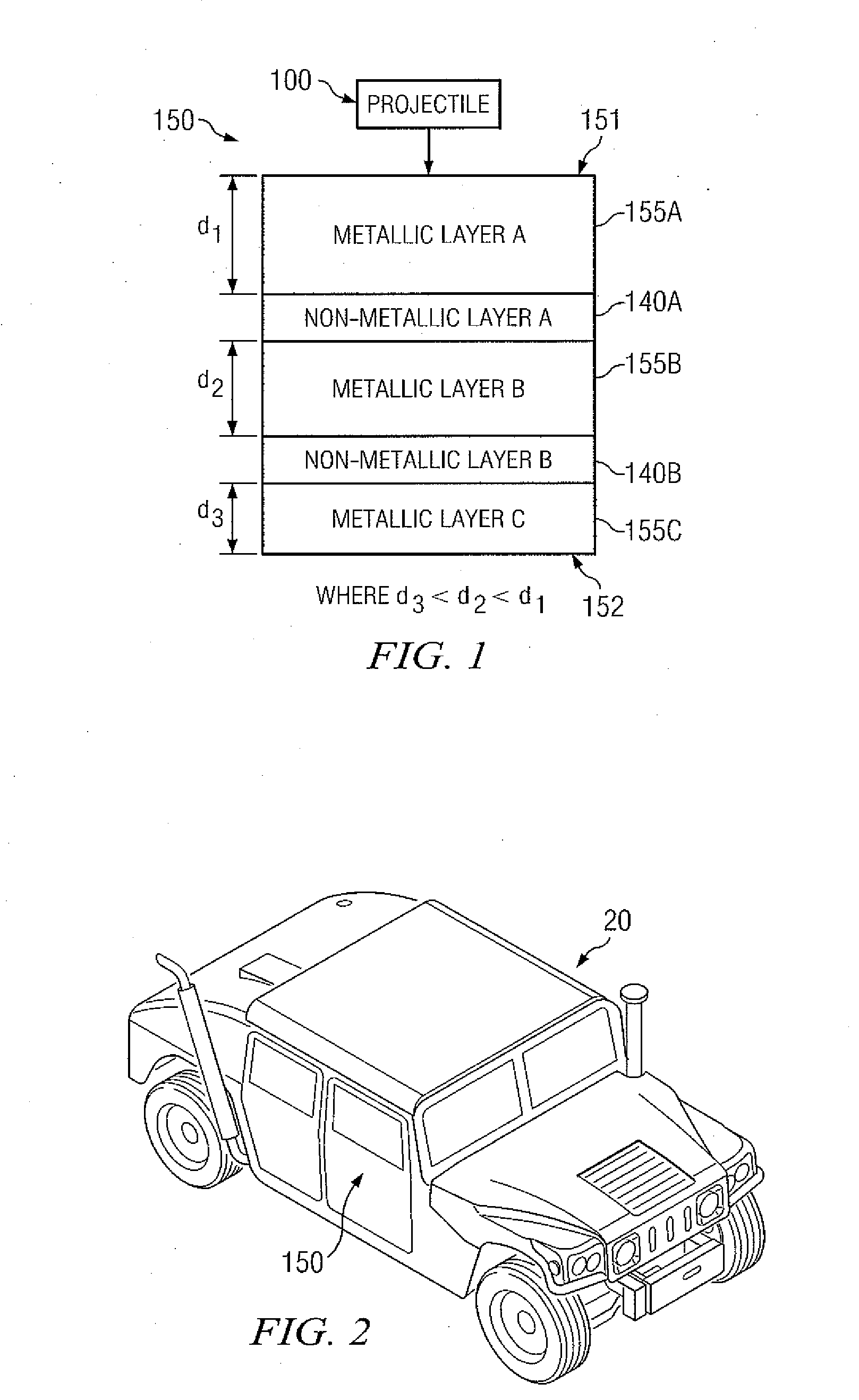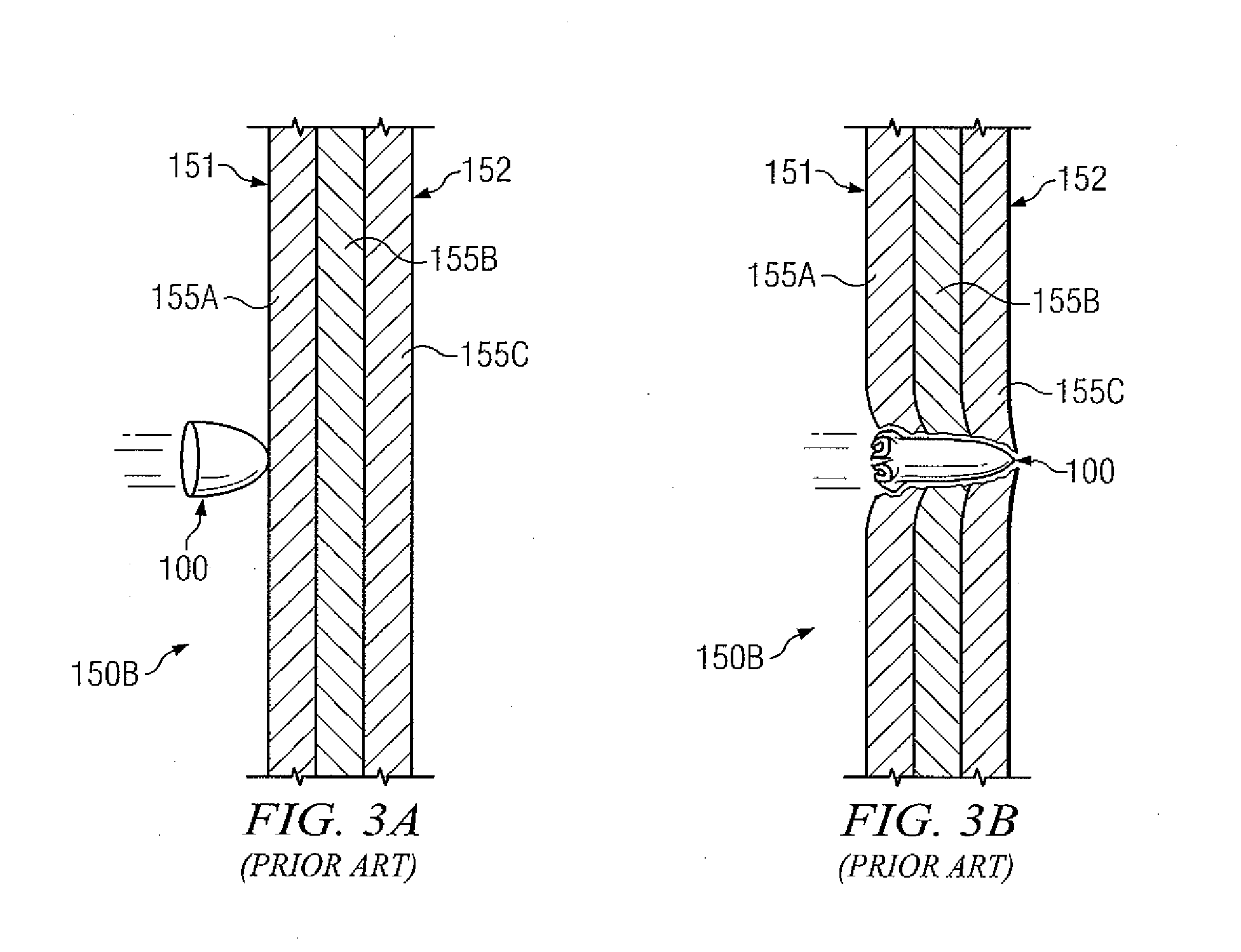Layering Non-Metallic Layers Between Metallic Layers to Improve Armor Protection
a non-metallic layer and armor protection technology, applied in the field of armor systems, can solve the problems of increasing so as to reduce the length of the metallic channel formed by the projectile at each metallic layer, reduce the cost of armor solutions, and slow down the effect of projectile particles
- Summary
- Abstract
- Description
- Claims
- Application Information
AI Technical Summary
Benefits of technology
Problems solved by technology
Method used
Image
Examples
Embodiment Construction
It should be understood at the outset that, although example implementations of embodiments of the invention are illustrated below, the present invention may be implemented using any number of techniques, whether currently known or not. The present invention should in no way be limited to the example implementations, drawings, and techniques illustrated below. Additionally, the drawings are not necessarily drawn to scale.
Teachings of certain embodiments recognize that armor systems may be used to provide protection against and / or reduce impact of various projectiles such as but not limited to shaped charges, explosively formed penetrators (EFPs), IEDs, ballistic devices, other explosives and hypervelocity impacts. Armor systems of the disclosure may be used in conjunction with any vehicle, such as but not limited to, military vehicles, convoy vehicles and / or personnel carriers and may be useful to protect personnel and equipment in war zones.
On the battlefield, shape charges such as...
PUM
| Property | Measurement | Unit |
|---|---|---|
| depth | aaaaa | aaaaa |
| thick | aaaaa | aaaaa |
| velocity | aaaaa | aaaaa |
Abstract
Description
Claims
Application Information
 Login to View More
Login to View More - R&D
- Intellectual Property
- Life Sciences
- Materials
- Tech Scout
- Unparalleled Data Quality
- Higher Quality Content
- 60% Fewer Hallucinations
Browse by: Latest US Patents, China's latest patents, Technical Efficacy Thesaurus, Application Domain, Technology Topic, Popular Technical Reports.
© 2025 PatSnap. All rights reserved.Legal|Privacy policy|Modern Slavery Act Transparency Statement|Sitemap|About US| Contact US: help@patsnap.com



